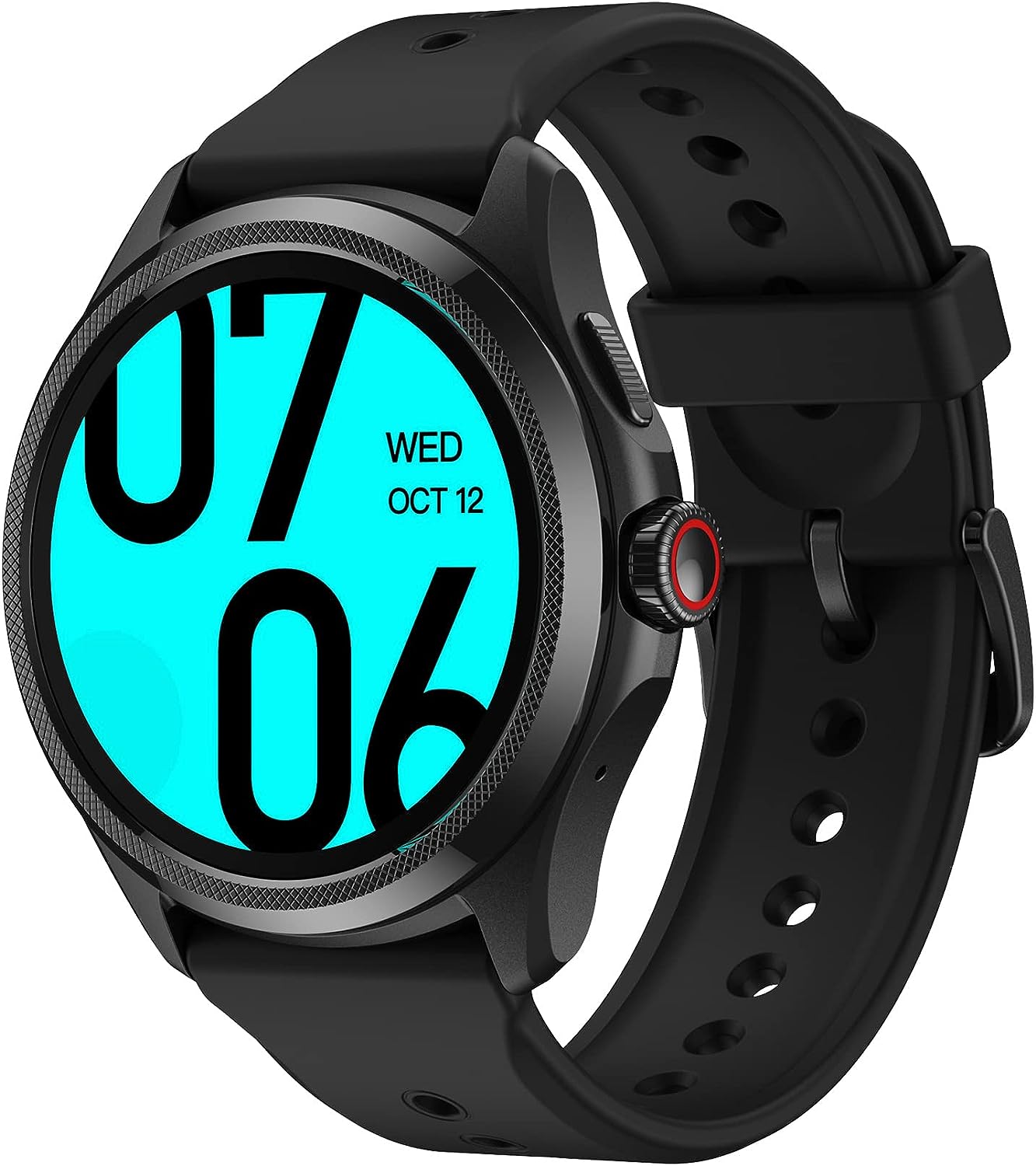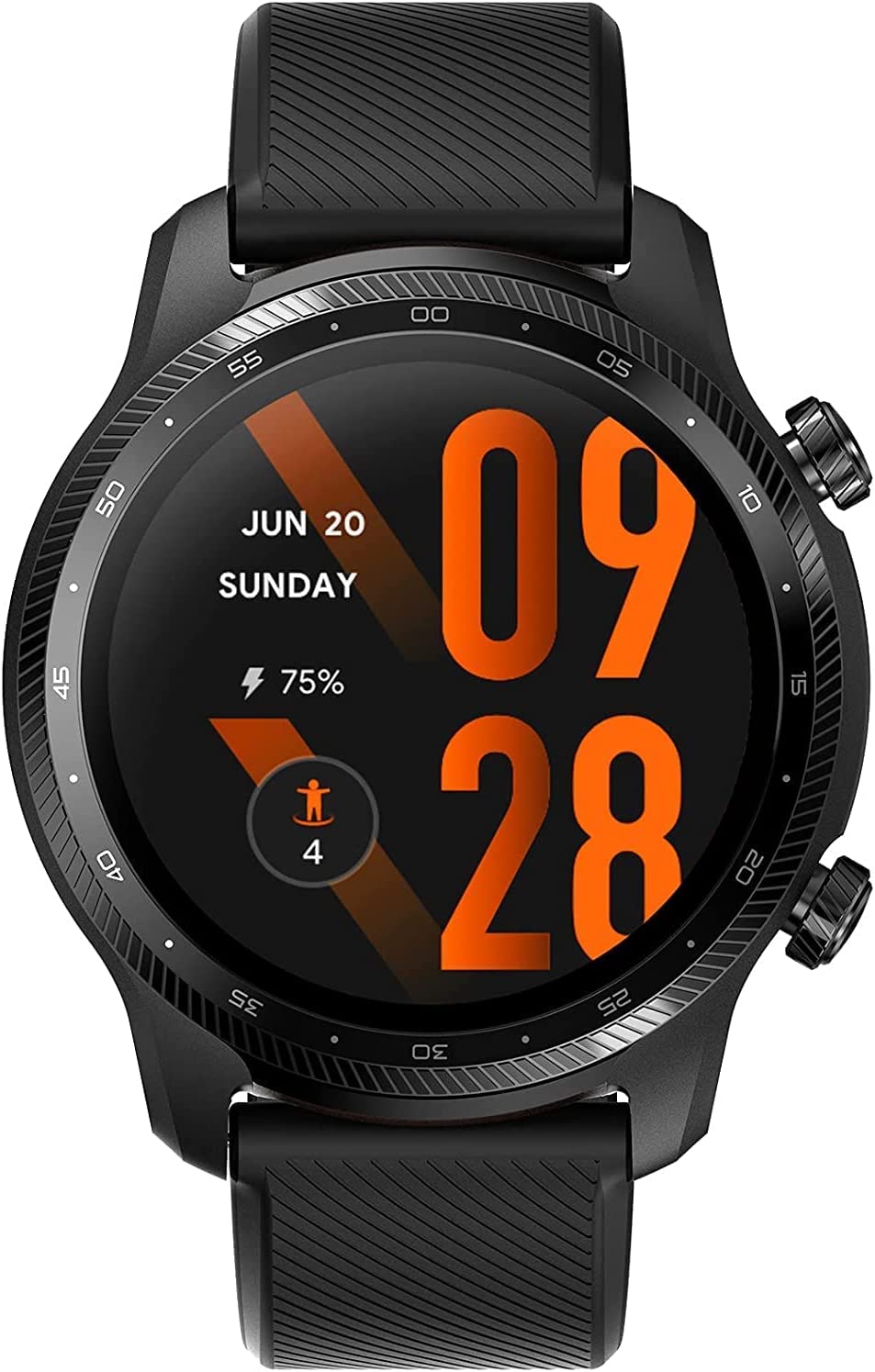Some upgrades hit you like a whisper—barely noticeable. Others? Like a cold splash of water to the face. That’s exactly the case here. We weren’t expecting the Ticwatch Pro 5 to feel this different compared to the Ticwatch Pro 3 Ultra, but the second you strap it on, it’s obvious—this is no simple refresh. It feels like Mobvoi stopped polishing and started reinventing.
And yet, we’ve worn the Pro 3 Ultra for months. We know its rhythm, we’ve trusted its stats, and honestly, it still holds its own in more ways than one. But here’s the thing: in 2025, with Wear OS evolving and user expectations climbing, you can’t ignore how fast things change. The Pro 5 doesn’t just feel newer—it feels smarter, faster, and oddly more human in the way it responds.
So let’s break this down the way it should be: no nonsense, no marketing fluff. Just screen, battery, brains, sensors, and comfort. Let’s see where each watch delivers—and where the Pro 5 leaves its sibling behind.
A screen that finally feels modern

You know that moment when you glance at a screen and immediately notice how smooth it looks? That’s what happens with the Pro 5’s 1.43” OLED display. It’s crisp, colorful, and just… alive. The refresh rate has been bumped up, and yes, you do notice it. Swiping, scrolling, tapping—everything feels faster, more immediate, more like a high-end smartphone than a wrist gadget.
Now, the Pro 3 Ultra’s 1.4” AMOLED screen is no slouch—it still delivers solid contrast and sharp details—but put it next to the Pro 5 and it suddenly feels static. Not bad. Just… dated.
And let’s talk design. The Pro 5 trims down the bezels and leans into a sleeker profile despite being slightly heavier. The shift to a rotating crown instead of the Pro 3 Ultra’s dual-button layout is a game-changer. Not only is it more comfortable, it feels natural. Spinning through menus with a crown just clicks in a way buttons don’t.
Both models, to their credit, are built like tanks. Military-grade certification, Gorilla Glass protection, and 5ATM water resistance come standard. Whether you’re hiking through rain or sweating it out at the gym, they won’t flinch.
Under the hood, it’s a different beast
Here’s where things start to get… unfair. The Ticwatch Pro 5 runs on the Snapdragon W5+ Gen 1, and that chip is a monster compared to the Snapdragon Wear 4100 in the Pro 3 Ultra. The difference isn’t theoretical—it’s daily-life obvious.
App launches on the Pro 5 are near-instant. Transitions? Smooth as silk. No random stutters. No lag when switching tiles or answering a call. It just works, and it works now.
We’ve tried pushing both watches with notifications, music streaming, GPS tracking, and voice commands—and the Pro 5 never blinked. Wear OS 3 runs like it was meant for this processor. On the Pro 3 Ultra, it’s functional, but you can feel the load time and the occasional pause. It’s a good experience… just not a fast one.
The battery marathon continues
Both watches are part of Mobvoi’s legendary battery clan, and yes, the dual-layer display system still steals the show. That combo of a high-res OLED with a low-power LCD is what makes them last where others fizzle out.
But then the Pro 5 quietly stretches things even further. Mobvoi claims up to 80 hours of standard use on the Pro 5, and in real-world use, it gets surprisingly close. GPS sessions, Spotify, notifications—it all fits in without nuking the battery.
The Pro 3 Ultra still holds firm at around 72 hours, which is great, but that extra stretch on the Pro 5 gives you room to breathe. And if you’re in a rush? The Pro 5 charges to 65% in about 30 minutes. The Pro 3 Ultra just isn’t as quick to bounce back.
Another detail that wins us over? Essential Mode on the Pro 5 now kicks in automatically when needed—based on your activity or charge level. On the Pro 3 Ultra, it’s still a manual decision or a preset schedule. It’s these little touches that add up over time.
More than just smart: practical upgrades that make a difference

Let’s be honest—most smartwatches do the basics. Notifications, calendar alerts, voice assistants, step counts… the whole checklist. These two are no different in that regard. You can make calls, control music, pay with NFC, and download apps straight from the Play Store on both.
But where the Pro 5 edges ahead is in the how. The rotating crown doesn’t just look better—it feels better. Navigating feels tactile, controlled, even fun. Try adjusting volume or scrolling mid-workout on sweaty fingers and you’ll appreciate the precision.
And let’s not forget software. The Pro 5’s smarter Essential Mode automation means you stop thinking about battery modes altogether. That’s what tech should be—less thinking, more doing.
Health data that dives deeper
If you’re buying one of these for health tracking, you’ll be well covered either way. Both watches bring 24/7 heart rate monitoring, SpO2 sensors, sleep analysis, stress tracking, and dozens of sport modes—from running and rowing to freestyle workouts.
But the Pro 5 doesn’t settle there. It adds skin temperature tracking, enhanced heart rate accuracy, and real-time recovery metrics—especially useful if you’re deep into training cycles or just trying to get smarter about your fitness routine.
The data feels more nuanced, more immediate. And it adapts better to changes in your activity. We saw more accurate resting heart rates and sleep insights on the Pro 5 during side-by-side use.
Does the Pro 3 Ultra still track the essentials? Absolutely. It hits 90% of what most users want. But if you’re chasing detail, granularity, and the kind of insights that might change how you train, the Pro 5 pulls slightly ahead.
Software updates: who has more future left?
It’s not sexy, but software support matters. A lot. The Pro 5 is newer, and that means longer support windows, quicker updates, and better app compatibility.
It launched with Wear OS 3 right out of the box, and it’s set up to get whatever Google and Mobvoi cook up next. Security patches, UI changes, feature upgrades—it’s all coming faster.
The Pro 3 Ultra was slower to get Wear OS 3, and while it’s still supported, it won’t be a priority. We’ve already seen how update cycles tend to favor the newest model, and it’s safe to expect more of the same here.
Fit, feel, and how they wear

Specs aside, we’ve lived with these on our wrists—and that’s where the differences hit home.
The Pro 3 Ultra is lighter, and that’s a bonus for smaller wrists or users who hate bulky gadgets. Its classic design and dual-button interface feel familiar and understated.
The Pro 5 has a sportier, more modern look, and yeah, the crown makes it stand out a bit more. It’s slightly heavier, but the balance is good. Once it’s on your wrist, you stop noticing the weight—and start noticing how much smoother everything is to interact with.
Both support interchangeable bands, so you can customize your look easily. But style-wise, the Pro 5 feels more like a smartwatch designed now, not in 2021. Its curves, screen-to-body ratio, and interface all feel current.
The final shake-up
We didn’t expect the gap to be this wide. We honestly thought the Ticwatch Pro 3 Ultra would stay closer to its successor. But after weeks of testing, swapping wrists, and pushing both to their limits, it’s obvious.
The Pro 5 is faster, smoother, and way more intuitive. It boots quicker, loads faster, and transitions like it has somewhere to be. Its battery lasts longer and charges faster. It gives you health data that’s both broader and more useful. And when you wear it, it just feels like a 2025 device—not a holdover from a few years ago.
Now, if your needs are simple, or if you can grab the Pro 3 Ultra at a lower price, it’s still a dependable piece of tech. It’s not a bad watch—it’s just not the one that’s pushing the category forward anymore.
The Pro 5 surprised us with how much it’s improved. It doesn’t scream for attention, but the moment you start using it, the difference is undeniable. No flashy gimmicks. Just quiet, confident upgrades that make everything easier, quicker, and yes—more enjoyable.
If you’re thinking of making the jump, we’d say go for it. Just be ready: once you’ve tried the crown, the speed, the screen—you won’t go back.


